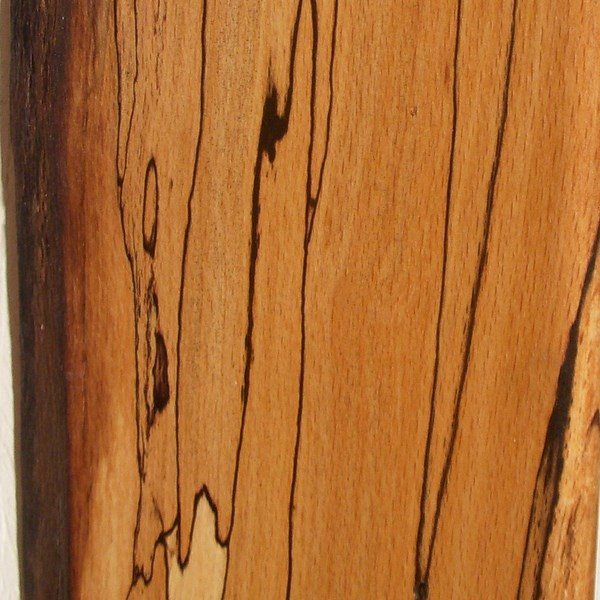Effects. There are many different types of effects created – from a loss of pigmentation producing a patchy or marbled effect of different shades of cream & brown, through soft white rot pockets (see bot left of above pic) to the most desirable & striking black, brown or red lines.
What is Spalting? Many timbers can spalt but Beech is one of the most common. Spalting is a term used to describe the process by which certain fungi grow on dead or fallen trees and after colonizing the wood via travelling up the wood cells from the ends or from broken off branches, leave a most attractive pattern. The process takes 2 to 3 years to reach the ideal stage to cut & season the timber.
The black lines are zone lines created by different species of fungi erecting barriers around their territory! There are primary colonizers who come first and establish territories and then have to defend them against secondary colonizers who are only able to colonize the wood because the primary colonizers have changed the ph of the wood & its structure. A microscopic army! If left unchecked eventually the whole tree is eaten & consumed, part of nature’s process of dealing with dead & fallen trees.
Working the timber. Where hard & soft zones are adjacent to each other on a board it is essential to take care with sanding as any soft areas will tend to be sanded away most easily, leaving hollows. The soft areas are the most white bits on the boards, but some good spalted boards will not contain any soft areas while others will be almost entirely soft.
Safety. Once kiln dried the fungi spores are inactive but some can cause some throat irritation to some when the wood is sanded – but I’m sure you will be using proper dust extraction or protection whatever the timber!

